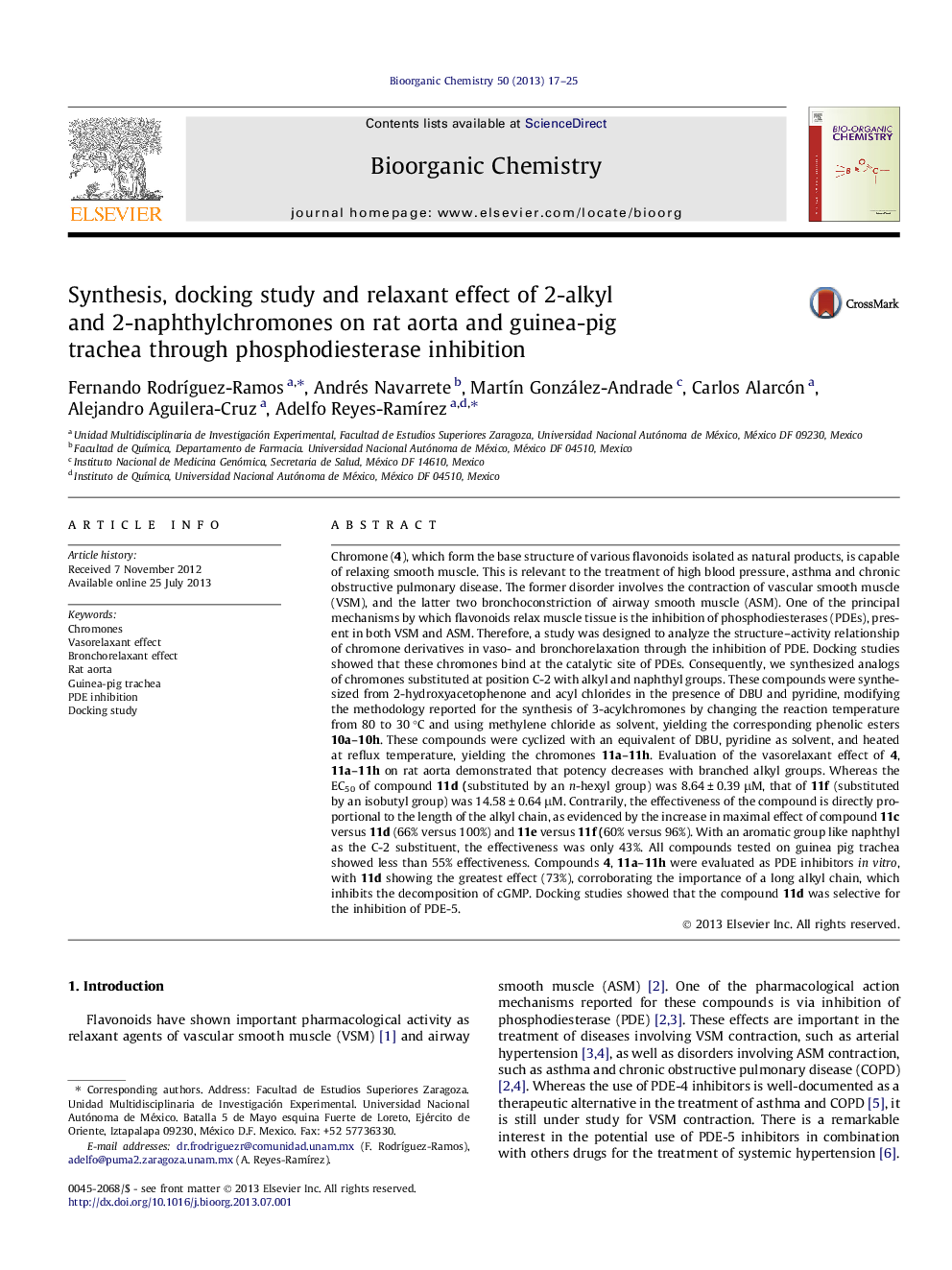| کد مقاله | کد نشریه | سال انتشار | مقاله انگلیسی | نسخه تمام متن |
|---|---|---|---|---|
| 1356221 | 1500464 | 2013 | 9 صفحه PDF | دانلود رایگان |

• 2-Alkyl and 2-naphthylchromones were synthesized.
• Compound 11d and 11f showed the highest vasorelaxant effect.
• Compound 11d inhibits cGMP degradation.
• Compound 11f inhibits cAMP and cGMP degradation.
• Compound 11d showed the highest binding affinity towards PDE-5.
Chromone (4), which form the base structure of various flavonoids isolated as natural products, is capable of relaxing smooth muscle. This is relevant to the treatment of high blood pressure, asthma and chronic obstructive pulmonary disease. The former disorder involves the contraction of vascular smooth muscle (VSM), and the latter two bronchoconstriction of airway smooth muscle (ASM). One of the principal mechanisms by which flavonoids relax muscle tissue is the inhibition of phosphodiesterases (PDEs), present in both VSM and ASM. Therefore, a study was designed to analyze the structure–activity relationship of chromone derivatives in vaso- and bronchorelaxation through the inhibition of PDE. Docking studies showed that these chromones bind at the catalytic site of PDEs. Consequently, we synthesized analogs of chromones substituted at position C-2 with alkyl and naphthyl groups. These compounds were synthesized from 2-hydroxyacetophenone and acyl chlorides in the presence of DBU and pyridine, modifying the methodology reported for the synthesis of 3-acylchromones by changing the reaction temperature from 80 to 30 °C and using methylene chloride as solvent, yielding the corresponding phenolic esters 10a–10h. These compounds were cyclized with an equivalent of DBU, pyridine as solvent, and heated at reflux temperature, yielding the chromones 11a–11h. Evaluation of the vasorelaxant effect of 4, 11a–11h on rat aorta demonstrated that potency decreases with branched alkyl groups. Whereas the EC50 of compound 11d (substituted by an n-hexyl group) was 8.64 ± 0.39 μM, that of 11f (substituted by an isobutyl group) was 14.58 ± 0.64 μM. Contrarily, the effectiveness of the compound is directly proportional to the length of the alkyl chain, as evidenced by the increase in maximal effect of compound 11c versus 11d (66% versus 100%) and 11e versus 11f (60% versus 96%). With an aromatic group like naphthyl as the C-2 substituent, the effectiveness was only 43%. All compounds tested on guinea pig trachea showed less than 55% effectiveness. Compounds 4, 11a–11h were evaluated as PDE inhibitors in vitro, with 11d showing the greatest effect (73%), corroborating the importance of a long alkyl chain, which inhibits the decomposition of cGMP. Docking studies showed that the compound 11d was selective for the inhibition of PDE-5.
Figure optionsDownload as PowerPoint slide
Journal: Bioorganic Chemistry - Volume 50, October 2013, Pages 17–25